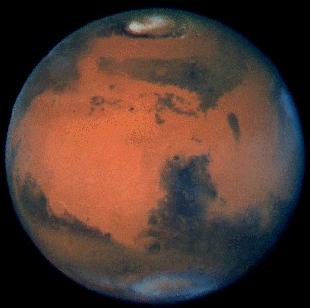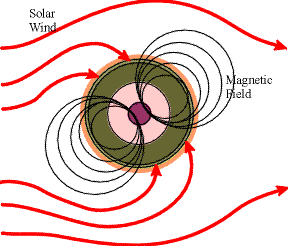Final Prerequisites for Life Sustaining Planets
There is a minimum size for an acceptable host planet for life. This is based on two concepts:
-
Geothermal Energy
If the planet is too small, it will cool too quickly! Recall, radiative decay and solidifying of the core where two important sources of geothermal heat still existing on Earth today (page 14 of notes). The moon cooled in just 1 billion years, and is no longer geologically active. Mars has only recently cooled.

Maintaining an Atmosphere
The moon does not have a great enough mass to be able to hold an
atmosphere. Again, Mars is barely massive enough, having a very
thin, but significant atmosphere, about 1/100th that of Earth.
Based on these two criteria, a minimum mass for a life sustaining planet or moon: Mars Mass. This is 1/10th the mass of the Earth. The moon, incidently, is 1/100th the mass of the Earth.
Stability.
Geologically, chemically, temperature, sunlight (stable, warm
star). must remain at least somewhat stable for fairly long
periods of time, allowing life to adjust if it can.
Major impacts must be deflected, or
minimal. The presence of Jupiter and
Saturn has decreased the rate of all impacts to Earth by a factor
of 10,000.

Ultraviolet Light.
UV light
can dissociate molecules in the cells, killing organisms.
Before the atmosphere had Oxygen, there was no Ozone to
shield organisms from the harmful Sunlight, though
our much thicker atmosphere did shield some. More over,
The Sun produced considerably MORE UV light in the first billion
years than it does now (even though it was less bright.. this
is because it was smaller, but hotter right after it formed).
Organisms living deep in the oceans or underground would be
shielded. Such organisms might be hard to find on a distant
planet or moon.
A Magnetic Field
The Earth's magnetism is very fortunate, since it protects life
on Earth from dangerous particles in the solar wind. If planets
did not have magnetic fields, life would be impossible.